15 Essential Longboarding Tips For Beginners
If you are about to embark on your very own longboarding journey and are looking for a beginner's guide on the top tips and hints to get you rolling with confidence, then you have come to the right place. Below, we have listed 13 key longboarding tips which will get you on the way to cruising in style in absolutely no time at all!
1) Picking the Board
As a beginner, you will most likely want to go for a longer longboard. A longboard with considerable length and width will allow for increased balance and a steadier footing when getting to grips with the art of longboarding.
2) Considering the wheelbase of your longboard
Along with taking into account the appropriate deck size, depending on your skill level, you will also want to consider the wheelbase of your longboard. Beginners may be inclined to pick a longboard with a longer wheelbase with increased length as this will allow for more stability and an easier ride.
3) Getting your stance right
Before you can ride, you need to get your stance and footing right. Now, if you’re right-footed, you will most likely stand with your left foot at the front and right foot at the back, otherwise known as the ‘regular’ stance. If you are left-footed, you will probably stand with your right foot at the front and left at the back, otherwise known as the ‘goofy’ stance.
If you are right-footed with a ‘regular’ stance, you will want to place your left foot on the centre of the board and then slightly in front. You will then want to use your left foot to push yourself so that you gain smooth momentum moving forward, then lift your back foot so that you place it on the board approximately shoulder-width apart from your left foot on the front of the board. Vice versa if you are left-footed with a goofy stance.
For those who are right-footed, riding with your left foot at the front of the board, once you press on your toes as you are riding, you should turn left and again, vice versa for those riding with their right foot at the front of the board.
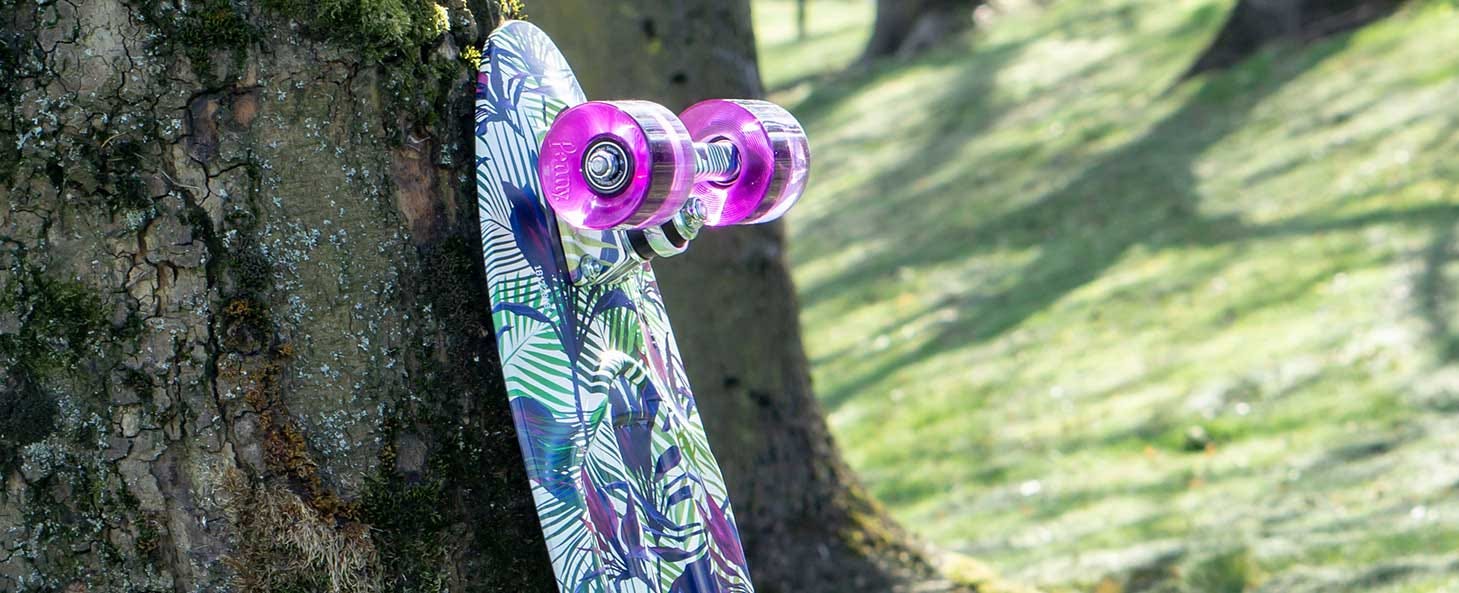
3) Finding your balance in static mode
Your balance on your longboard is one of the most important things you will need to get to grips with when it comes to longboarding. You can improve your balance by executing a couple of simple exercises at home. One easy to do exercise is to put the board on a thick carpet or grass. The friction on the rough surface will prevent the board from rolling forwards, helping to keep it stationary and fixed whilst you get your balance.
Step on the static longboard, get into the most natural stance. The feet should be apart roughly the distance between your shoulders; of course, it can also be a little wider. Dependent on the length of your board, the feet can be on top of, or close to the trucks’ bolts.
The back foot, which is left if goofy or otherwise right, should naturally be around perpendicular to the deck. You will then want your front foot to be angled slightly with that deck, approximately by 45 degrees. For extra stability, bend your knees and lean forward a little.
4) Pushing your longboard
To start off, bend your front leg. You’ll want to be able to have your pushing (rear) foot stand flat on the ground next to your longboard. It is generally fine to put your weight on your pushing leg to begin with, but you will then want to place your weight above the board on your front foot to the point where you are using your pushing leg as if you are rowing a boat. As a beginner, you’ll notice that your pushes will be fairly brief as you’ll be getting familiar with balancing on the board with one foot whilst moving, but this is something that you will get used to in good time. Before you know it, you’ll be pushing yourself along with broad strokes at speed!
5) Practicing your turning
Practicing your turning will help you massively on your road to longboarding and it is actually easier than you think! All you need to do is lean your body to the side and direction that you want to turn into and the board will dip a little and turn into the direction you want to swerve into. Longboards in general are more flexible, which makes turning fairly easy and straightforward.
6) Braking
Braking can be quite daunting, but once you learn how to do it correctly, it’s a piece of cake. What you want to do is stand in the same position as if you were to push yourself forward, then balance on the standing foot and lift the other foot off the back, pointing your toes on both feet forward. Whilst you do this, bend your front knee to lower your centre of gravity, whilst also lowering your back foot towards the ground. You’ll then want to lightly brush your foot on the floor. The lighter you brush your foot on the floor the smoother you will come to a stop. Now, you can start lifting your foot and placing it back onto the board with your feet in the same original position.
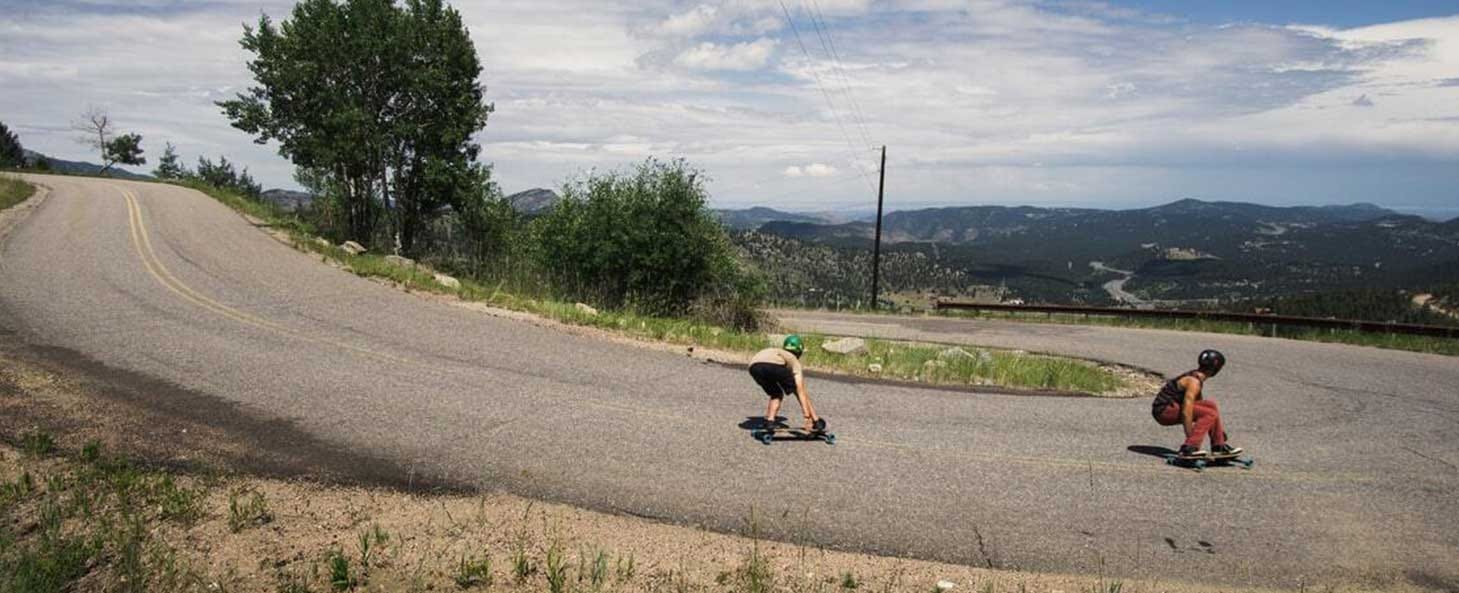
6) Get comfortable with rolling
Have a go at rolling on a flat surface, slowly and carefully. If you maintain a low centre of gravity, you will feel a lot more stable and balanced. You will want to just get used to the mechanics of the longboard, adapting to how it rolls, keeping your balance on point and ensuring you master your stance before going all out.
7) Choosing your surface correctly
Along with not rushing your tricks, you will want to make sure that you choose your surface carefully, especially when just starting out. You’ll want to practice on a flat surface with plenty of space. That way you won’t have to worry about bumping into anyone or any obstacles and the flat surface will ensure that you don’t hit fast speeds that’ll cause you to lose control of your movement.
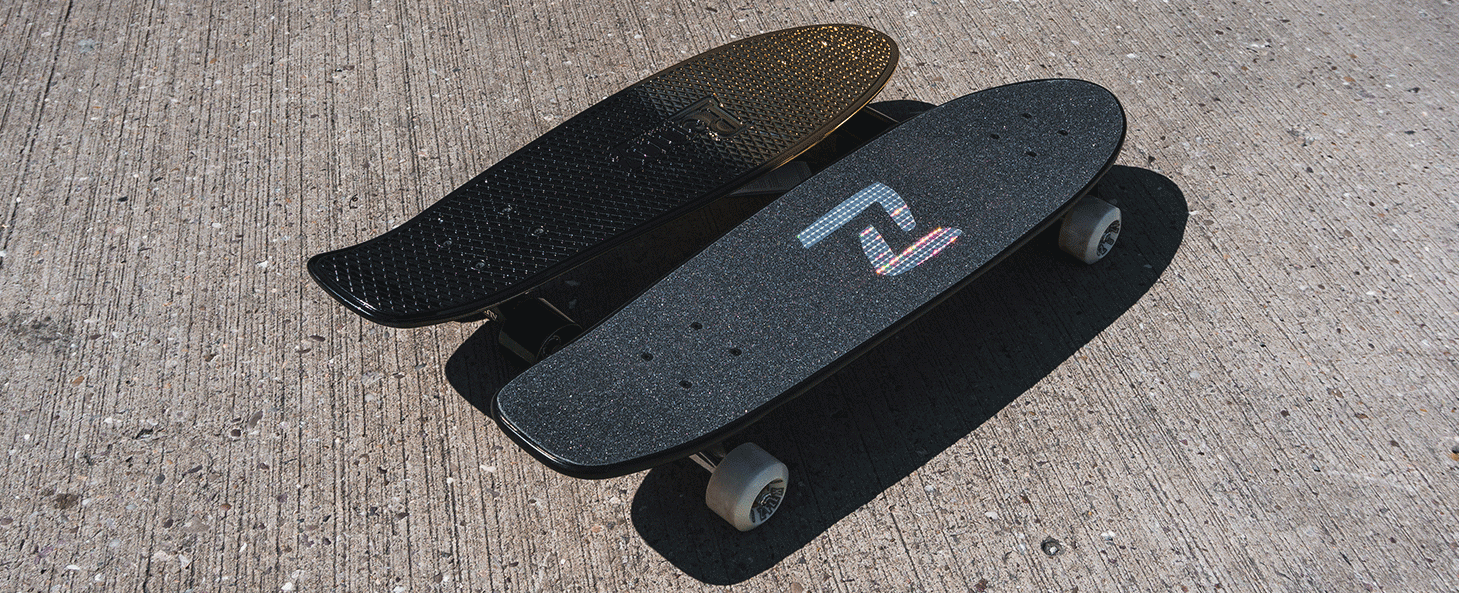
8) Slowing down through carving
Slowing down through carving is exactly what it sounds like. You will want to slow down your momentum through curving your riding pattern in the direction of an ‘S’. The carving will help to slow down your momentum, whilst ensuring your direction of movement remains straight ahead before coming to a complete stop. You’ll want to bend your knees to lower your centre of gravity, leaning forward and pushing your weight onto your toes to carve toeside, before putting your weight on your heels whilst staying low with your knees bent to carve heelside.
9) Practice Falling
Learning to fall is an essential part of longboarding. It may sound scary, but sooner or later, you will fall. It’s part of the learning process and learning how to properly fall will mean that you will fall safely, overcoming your fear of falling whilst riding. The most important thing is to avoid falling on a stiff arm or hands to avoid breaking your arm or wrist. When you fall, you may naturally want to flail your arms, but what you want to do is tuck your arms into your body so that on your forearm and roll onto your shoulder. Learning to fall gracefully whilst rotating your body may take a bit of practice and getting used to, but you can practice this on a soft surface and before you know it, you will be falling gracefully.
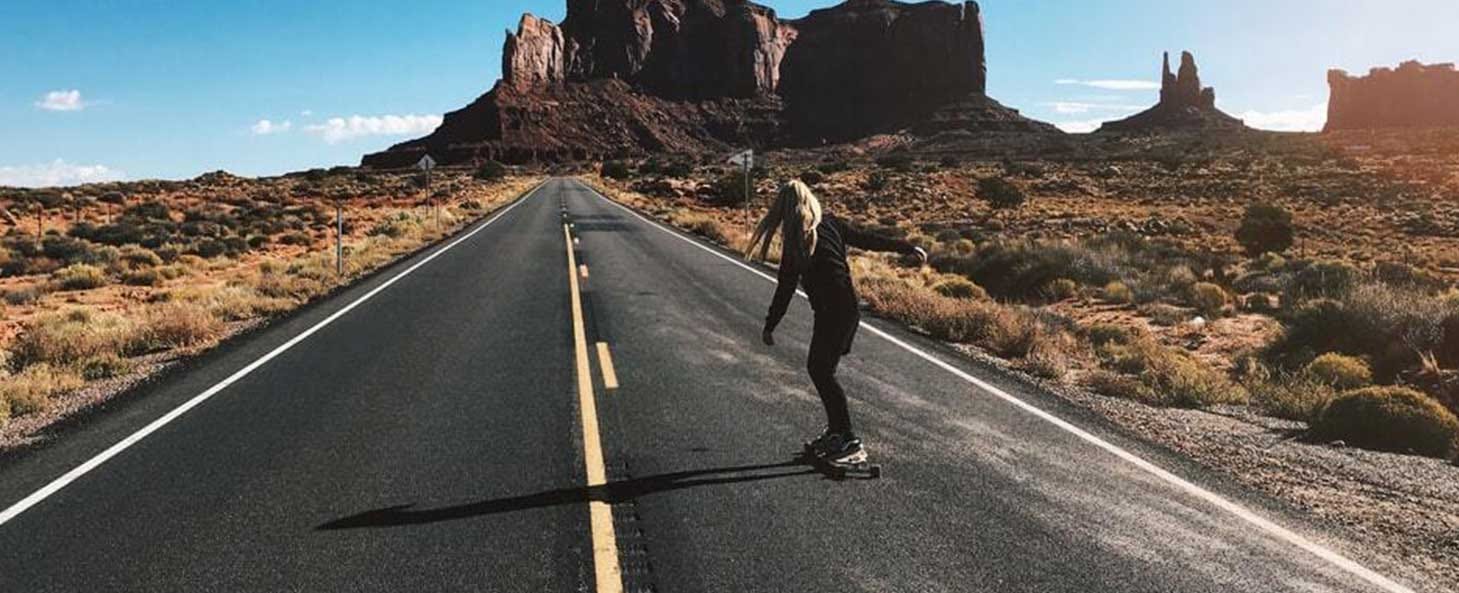
10) Safety
This step goes without saying, but you must remember to ensure safety first at all times. This will mean increasing the pace at which you ride gradually as your skills also improve too over time. It also means that you will want to be considerate of other riders and pedestrians, ensuring that you manage your speed and distance from those around you. You will also want to make sure that you are wearing the right protective gear when riding to ensure that you have fun safely. We have a range of protective gear from top brands, including helmets, knee pads, elbow pads and more which you can browse here!
11) Practice riding on a mild hill
Once you have got to grips with balancing, riding on a flat surface and braking, you can proceed on to riding on a mild hill. Make sure you choose a hill that isn’t too steep so that you can get your slowly develop your technique. To begin with, you might want to choose a hill that ends on a flat surface or even slightly uphill, as this will help you come to a safe stop.
12) Bending your knees
When riding down hills or braking on your longboard, you’ll want to make sure that you bend your knees. This will allow you to lower your centre of gravity so that you stand firm and stable on your longboard, minimising your risk of falling off. Bending your knees will also allow your legs to act as a suspension, taking on any bumps or uneven surfaces which you may face.
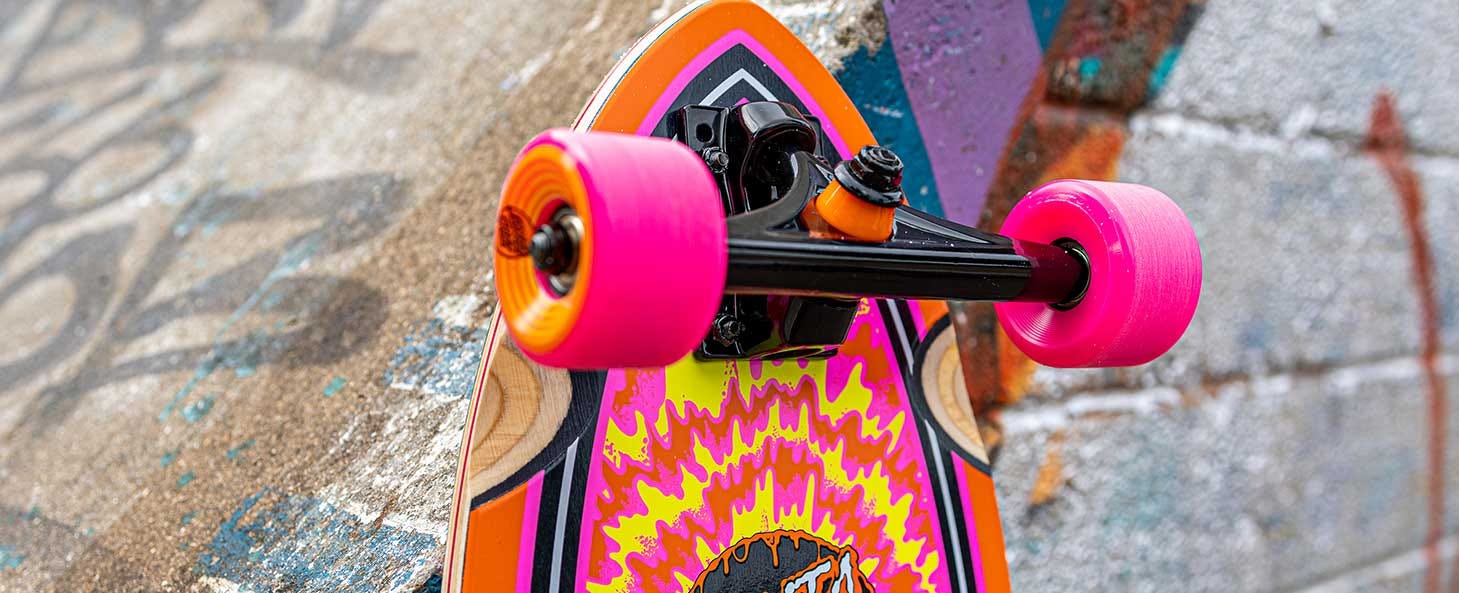
13) Don’t rush into tricks
When you are starting out, you want to make sure that you don’t take on too much too fast. As eager as you might be, you’ll want to start off mastering the basic movements and getting to grips with your balance, along with braking and turning. Be sure to take it slow and before you know it, longboarding will be like second nature to you.

